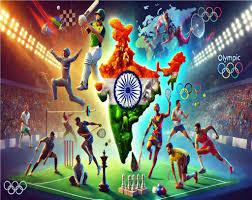Sports have always been a universal language. They transcend boundaries, cultures, and languages, creating a bond that connects people around the world. Over the last few years, I’ve watched how sports have taken on a new identity — one that includes emerging nations like India, Africa, and Asia as strong contributors to the global athletic landscape. These regions are no longer just spectators; they’re shaping the future of sports with innovation, participation, and talent development that is inspiring to witness.
From Local Passion to Global Recognition
When I think about how this transformation began, it’s impossible to ignore how digital platforms and streaming services opened doors for regional players and leagues. Suddenly, sports that were once considered “local” started gaining international audiences.
-
Indian cricket, for example, has transformed from a national pastime to a global phenomenon with tournaments like the IPL showcasing world-class competition.
-
African football leagues have begun producing star athletes who dominate international clubs and global events.
-
Asian countries, from Japan to Indonesia, are building strong infrastructures to host major international tournaments.
This global recognition isn’t just about fame; it’s about opportunity. Sports academies in smaller towns, grassroots development programs, and cross-border collaborations are all part of this growing ecosystem. I’ve seen how these initiatives create new dreams for young athletes who once had limited access to resources or exposure.
Technology’s Role in Expanding Access
Technology has played a major part in the globalization of sports. Today, training apps, wearable trackers, and virtual coaching platforms help athletes in developing nations perform at the same level as their global counterparts. Access to information and analytics is no longer restricted to elite professionals — it’s available to anyone with a smartphone and a desire to improve.
In my view, this digital revolution has broken the monopoly of traditional powerhouses. It has created a fairer playing field where passion and discipline matter more than location or privilege. The rise of online communities also fuels motivation — fans and players share experiences, celebrate victories, and exchange knowledge instantly.
Some ways this digital evolution is empowering athletes include:
-
Online streaming that showcases regional leagues to global audiences.
-
Social media marketing helping players build personal brands.
-
E-sports and virtual tournaments connecting fans and players beyond borders.
-
Real-time analytics improving performance and training efficiency.
I once compared this level of access to discovering something new and delightful for the first time — the same way someone might enjoy a fresh flavor like mixed berry jam monster for the very first time. It’s unexpected yet satisfying, adding more depth to the experience.
The Rise of Female Athletes in Emerging Regions
Another incredible trend is the growth of women’s participation in sports across these regions. In India, the women’s cricket and hockey teams are achieving international success. In Africa, female runners and footballers are becoming household names. And in Asia, countries like China, Japan, and Thailand are promoting gender equality through sports programs and sponsorships.
What’s interesting is how these athletes are not just competing but leading — creating role models for young girls who now see sports as a viable career. Governments and private organizations are investing heavily in building safe, inclusive, and professional environments where talent can thrive.
This shift is also visible in fan engagement. Social media platforms give these athletes a voice that reaches millions, and fans connect to their stories on a personal level. The blend of cultural pride and sportsmanship is what makes this movement so powerful.
Economic Growth Through Global Sports Integration
The expansion of sports in these regions is more than just a cultural phenomenon — it’s an economic opportunity. Hosting international tournaments brings in tourism, media exposure, and investment in infrastructure. Cities across Asia and Africa are transforming into sporting hubs, complete with modern stadiums, training centers, and sustainable facilities.
Some key impacts I’ve noticed include:
-
Job creation in event management, broadcasting, and sports technology.
-
Boosted tourism as fans travel across borders to attend events.
-
Increased sponsorship deals from global brands eager to reach new markets.
-
Strengthened international relations through sports diplomacy.
For example, countries like Qatar, India, and South Africa are leveraging major events to position themselves as sports-friendly nations. This strategy not only strengthens their global image but also builds long-term growth in their economies.
Why Fans Everywhere Benefit
As someone who follows sports closely, I’ve realized this globalization benefits everyone — from fans to players to brands. With diverse talent entering the global scene, we get to see fresh competition, new styles of play, and cultural exchanges that enrich the entire sports experience.
Fans now have access to games, highlights, and interviews from around the world, available at their fingertips. This interconnectedness reminds me of how communities built around shared interests grow stronger, similar to how people discuss or share their favorite jam monster e liquid flavors — it’s about connection, discovery, and shared enthusiasm.
Sports brands, too, are tapping into this potential by introducing equipment and apparel suited to local conditions while maintaining international standards. These efforts make the entire industry more inclusive and sustainable.



